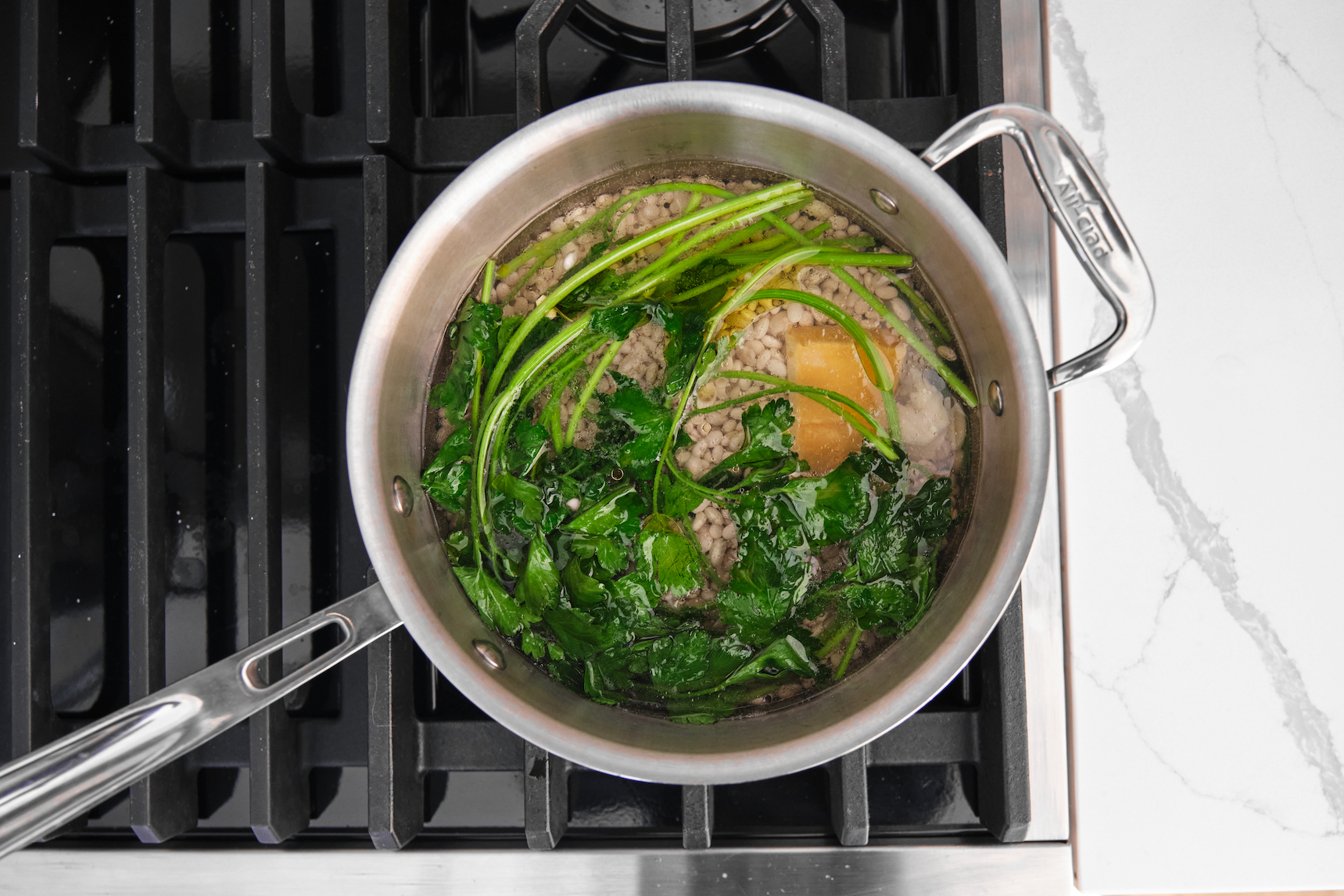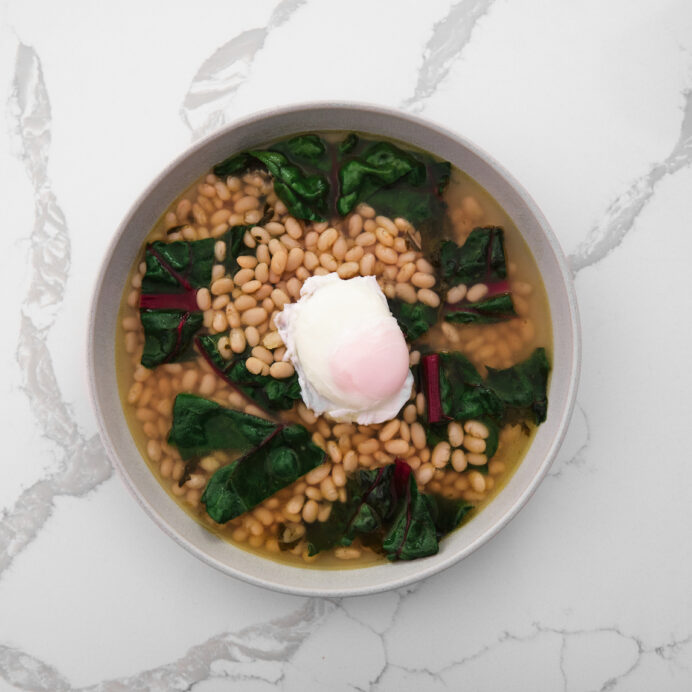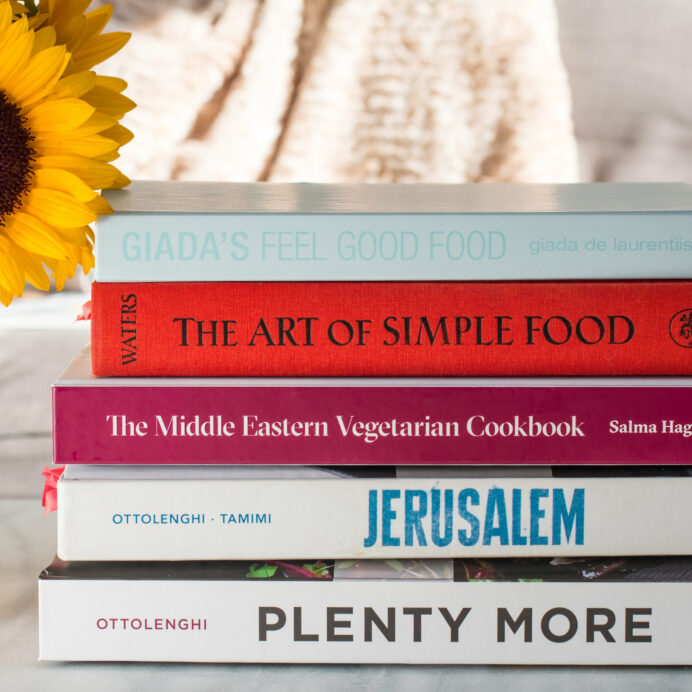When I step back from the messy, imperfect everyday-ness of it, I think about cooking as a way to turn the mundane into something sacred. Nothing exemplifies this more than dried beans.
Given some love and the slowed-down hours of a Sunday morning, they become a ritual. They offer that slow-simmering comfort. The smell of garlic and herbs and olive oil. A warm kitchen. And they reassure. If nothing else, you’ll have something good and nourishing to eat all week.
And the end result is better than good: a lowly bulk bin item made into something divine. Much different than canned beans, though I love those too. The starch released during the cooking process works with the fat, salt, and aromatics to create a velvety liquid that tastes bright, comforting, and complex. You’ve essentially created a broth, perfect to eat with the beans like a soup or stew of sorts. The beans themselves take on the flavor of the broth, and their delicate skins give way to a perfectly creamy inside.
Alubia Blancas are my favorite bean for this recipe. They’re small and creamy with a thinner skin that still holds its shape. Cannellini, Great Northern, and Navy Beans would also be great. Anything works here, really—as long as it’s fresh. Grocery stores aren’t always transparent about the age of their product. I like to order separately from an heirloom bean site like Rancho Gordo to be sure I’m getting something legit.
No matter what kind of bean you choose, this pot of legumes will serve you in a million ways throughout the week.
Method:
- Night before: soak the beans. This helps hydrate and soften the beans, which reduces the cooking time. Choose a container that leaves enough room for the beans to expand significantly. Add the dried beans and fill the container with cold water, so it rises an inch or two above the beans. Cover and place in the fridge.
- Next day: Heat olive oil over medium heat in a large pot. Add garlic and a generous dash of salt. Saute until garlic becomes fragrant, about two minutes.
- Add parsley and saute for a moment to coat in olive oil and mix with garlic. Add beans and water. Season with salt. Cover and bring to a boil. Then quickly turn heat down to a low simmer. This ensures bean skins remain intact as they cook.
- Simmer beans, uncovered, until they’re tender throughout. Add more water if needed (they should always be covered with water). Taste and adjust salt level if needed.
- Tasting will be your best bet to determine doneness. The skins should lose their toughness, giving way to a creamy, evenly-textured inside. Sometimes the skins offer a clue here by beginning to curl back. Cooking time will vary between forty minutes and two hours. (I KNOW. But worth it, I swear.) Fish out the parsley, Parmesan rind, and garlic cloves (or not!). Stir in the lemon juice. Grind black pepper and add more salt if needed. Serve. Store leftover beans in the fridge in an airtight container with their cooking liquid.




